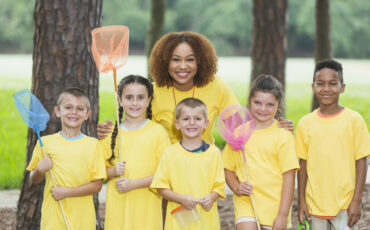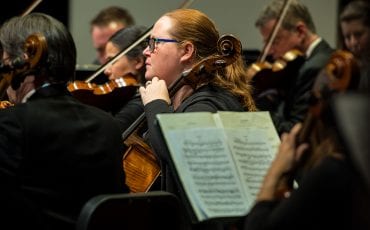10 Practical Tips to Help Your Kids When the World Seems Scary

Sometimes conversations about hard things, like the recent tragic school shooting in Texas, a grocery store in New York and a Tulsa hospital, come in waves and continue to resurface. Knowing how to help your child process the facts and their feelings can feel hard. As you navigate having age-appropriate conversations with your children and behaviors to adopt, these tips can help you stress less and feel more confident in approaching the topics and doing the right things.
Turn off the news. Watching the news cycle repeat over and over doesn’t help anyone. The images, repeated stories, personal accounts and police reports are hard for kids to make sense of. The news is hard for kids. You can get all the news you need in one well-reported or well-written story. Then turn it off. Don’t have it running in the background. Also, be aware of switching the radio station as needed. Kids need news from you, not broadcasters.
Ask but don’t push. Ask your child if he’s heard about the most recent tragedy. Find out what they already know. Open the door and leave it open, but don’t force him to walk through it. Sometimes recognizing that it can be talked about is enough for one day. Let him talk when he’s ready.
Talk about your feelings, but don’t dwell on them. Kids should see that their parents feel things because it gives them permission to feel, too. Especially since they don’t understand all of the feelings inside themselves. Express your feelings gently without dwelling on them. Admit what you don’t understand. Model healthy ways to express your feelings.
State your ideas concisely. It’s good for kids to hear their parents’ ideas about hard subjects. For better or worse, they help kids develop their own ideas. Having excessive, lengthy rants about gun control or military action is not helpful for kids. These are scary subjects for kids. You can express your idea simply and ask kids what they think if it seems appropriate.
For example, with a tween or teen, you could say, “I think this is why I have a hard time understanding why people need guns. Maybe I don’t know everything about it, but I don’t think the average person needs an automatic weapon. What do you think?”
With a younger child something simpler like, “Who do you think should have guns? I’m glad that the police learn how to use their weapons safely to keep us safe,” is a better choice.
Make sure what you say is age-appropriate and offers an opportunity for your child to think and express ideas, even if they are different from your own.
Don’t worry. I know that sounds impossible; worry is an automatic response for parents. But worrying all the time in every situation will only breed worry and fear in your child. As parents, we need to think about safety, but also decide what is appropriate to share with our children and when.
An example with young kids is just to get them thinking: “Hey, I noticed that there is an emergency exit over there. Do you see any more? It’s always good to know where they are.”
With older kids, it may be something different: “I see a police officer over there. If I got pulled over, what do you think I should do? I always try to keep my hands on top of the steering wheel where the officer can see them, so there is no confusion about what I’m doing.”
These are hard conversations and should not be the only thing we talk about. But weaving thoughts like this into our everyday lives will help our children think proactively about being safe without making them be afraid of every possible situation.
Use your hands. Sometimes it’s hard for kids, and even adults, to express their feelings when something scary happens in the world. Providing opportunities to work out some of their feelings helps the intensity fade a little. Working in the yard, going for a run, coloring or even using Play-Doh gives us the opportunity to express feelings without the pressure to say everything.
Be the good. Give kids a tangible way to help. If you are religious, go beyond the idea of praying for people and actually pray together. Make cards or cookies for first responders. The tragedy may not have happened in your area, but encouraging the police, fire and EMS workers that keep us safe helps them and you. Give them something to do that makes them feel like part of the solution.
Answer questions honestly. Kids crave information, and they often feel like they don’t get the whole story. It’s okay and healthy to give them information in an age-appropriate manner.
If they know they can trust you for the truth, they are more likely to come to you with their questions.
Be grateful. The bad things that happen have a way of bombarding us. The news and public conversation all focus on the terrifying things that happen. Make sure you purpose time to look for good. It doesn’t need to be fake or cliché. Being grateful increases empathy, reduces aggression and helps with stress.
Comfort and reassure. All of us can use some of this, especially the little ones in our lives. Make time for hugs and snuggles. Be there and be close. Your presence will help them remember that they are safe. It just may help you get through it, too.
Remember, you are the safety your child craves in a world that can feel scary. Show them that you are willing to talk about the hard things, and it will help you both.
-Rebecca Hastings







